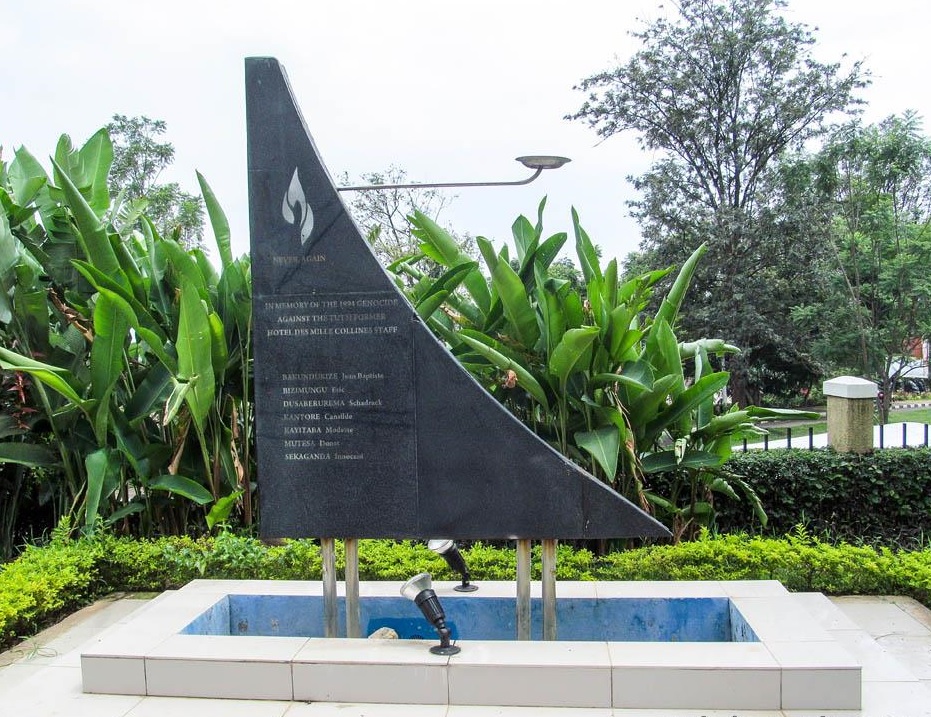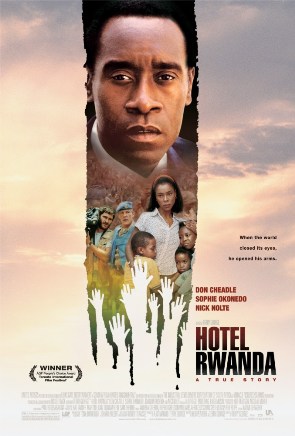Rwandan Genocide
The Rwandan genocide, known officially as the genocide against the Tutsi, was a genocidal mass slaughter of Tutsi in Rwanda by members of the Hutu majority government. An estimated 500,000–1,000,000 Rwandans were killed during the 100-day period from April 7 to mid-July 1994, constituting as many as 70% of the Tutsi and 20% of Rwanda's total population.
After the Tutsi-backed Rwandan Patriotic Front (RPF) regained control of the country and ended the genocide, an estimated 2,000,000 Rwandans were displaced and became refugees (most of the Hutus). The genocide was planned by members of the core political elite, many of whom occupied positions at top levels of the national government. Perpetrators came from the ranks of the Rwandan army, the Gendarmerie, government-backed militias including the Interahamwe and Impuzamugambi, as well as countless ordinary civilians.
The genocide took place in the context of the Rwandan Civil War, an ongoing conflict beginning in 1990 between the Hutu-led government and the RPF, which was largely composed of Tutsi refugees whose families had fled to Uganda following earlier waves of Hutu violence against the Tutsi. International pressure on the Hutu-led government of Juvénal Habyarimana resulted in a ceasefire in 1993, with a roadmap to implement the Arusha Accords, which would create a power-sharing government with the RPF. This agreement displeased many conservative Hutu, including members of the Akazu, who viewed it as conceding to enemy demands. Among the broader Hutu populace, the RPF military campaign had also intensified support for the so-called "Hutu Power" ideology, which portrayed the RPF as an alien force intent on reinstating the Tutsi monarchy and enslaving Hutus, a prospect met with extreme opposition.
On April 6, 1994, an airplane carrying Habyarimana and Burundian president Cyprien Ntaryamira was shot down on its descent into Kigali, killing all on board and injuring one who received fatal wounds and died later en route to the hospital. Genocidal killings began the following day; soldiers, police, and militia quickly executed key Tutsi and moderate Hutu military and political leaders who could have assumed control in the ensuing power vacuum, then erected checkpoints and barricades and used Rwandans' national identity cards to systematically kill Tutsi. These forces recruited or pressured Hutu civilians to arm themselves with machetes, clubs, blunt objects, and other weapons to rape, maim, and kill their Tutsi neighbors and to destroy or steal their property. The breach of the peace agreement led the RPF to restart its offensive and rapidly seize control of the northern part of the country before capturing Kigali in mid-July, bringing an end to the genocide. During these events and in their aftermath, the United Nations (UN) and countries including the United States, the United Kingdom, and Belgium were criticized for their inaction, including failure to strengthen the force and mandate of the UN Assistance Mission for Rwanda (UNAMIR) peacekeepers, while observers criticized the government of France for alleged support of the Hutu-led government after the genocide had begun.
 Memorial sign at "Hôtel des Mille Collines" or better known as "Hotel Rwanda".
Memorial sign at "Hôtel des Mille Collines" or better known as "Hotel Rwanda".
The genocide had a lasting and profound impact on Rwanda and its neighboring countries. The pervasive use of war rape caused a spike in HIV infection, including babies born of rape to newly infected mothers; many households were headed by orphaned children or widows. The destruction of infrastructure and the severe depopulation of the country crippled the economy, challenging the nascent government to achieve rapid economic growth and stabilization. The RPF military victory and installation of an RPF-dominated government prompted many Hutus to flee to neighboring countries, particularly in the eastern portion of Zaire (now the Democratic Republic of Congo), where the Hutu genocidaires began to regroup in refugee camps along the border with Rwanda. Declaring a need to avert further genocide, the RPF-led government led military incursions into Zaire, including the First (1996–97) and Second (1998–2003) Congo Wars. Armed struggles between the Rwandan government and their opponents in DRC have continued to play out through proxy militias in the Gomaregion, including the M23 rebellion (2003–2013). Large Rwandan Hutu and Tutsi populations continue to live as refugees throughout the region.
Today, Rwanda has two public holidays mourning the genocide. The national mourning period begins with Kwibuka, the national commemoration, on April 7 and concludes with Liberation Day on July 4. The week following April 7 is an official week of mourning, known as Icyunamo. The genocide served as an impetus for creating the International Criminal Court to eliminate the need for ad hoc tribunals to prosecute genocide, crimes against humanity and ware crimes.
Rwanda is a beautiful country, but unfortunately has a very black history. Let's hope, like it says on practically every genocide monument in the country, it will happen... NEVER AGAIN!!!
I do recommend you also visit the Kigali Genocide Memorial, where you can also find a (traditional) geocache (by Carbon Hunter), with a name that says it all: 100 Days of Madness.

Hotel Rwanda
The cache is placed on the premises of Hôtel des Mille Collines, a large hotel that became famous after 1,268 people took refuge inside the building during the Rwandan Genocide of 1994. The story of the hotel and its manager at that time, Paul Rusesabagina, was used as the basis of the film "Hotel Rwanda" (2004). Although the film was not actually shot at the hotel (that was done mainly in South Africa), the movie is worth watching to get an understanding of what happened here...
The cache
Now, to get to the cache location, please find the answers to the following 'educational' questions (Google is your friend!). Take the consolidated number of the word value of your answer (e.g.: "Kigali" = 49 --> 4+9 = 13 --> 1+3 = 4. Answer is 4):
A). What is the name of the earliest inhabitants of what is now Rwanda, even long before the Hutu and Tutsi? (3 letters).
B). A local politician who knew about the plans to distribute weapons to Hutu militias to kill Tutsis, and also Belgian members of UNAMIR, informed a commander of UNAMIR, who in his turn informed the UN headquarters and tried to get permission for the protection of the informant and his family. Kofi Annan repeatedly forbade the operation until guidance was received from HQ. He did so even as the genocide had started, despite having the authority for approval. During the genocide this commander defended specific areas where he knew Tutsis to be hiding. His actions are credited with directly saving the lives of 32,000 people... What is the SURNAME of this commander? (extra info: he was born in The Netherlands!)
C). Who played this commander's roll in the movie "Hotel Rwanda" (although in the movie he has a different name, but it's based on the commander in question B)? Take only the surname of this famous actor...
D). Although some army units used rifles, most of the victims were killed in their own villages, often by their neighbors and fellow villagers, with a .............. . (Take the SINGULAR word of this 'weapon')
E). Prisoners accused or convicted of genocide are held in prison, where they wear - what color of - coverall??? (You can sometimes see them on Rwandan hillsides, working in the prison fields). Mind: different websites give contradictory statements. As an aid, the color you are looking for consists of 4 letters!
Update: I have been told by a local (station manager of KLM at Kigali airport) that anybody awaiting the verdict of a judge, so anybody who is still in trial, wears this color suit. After they are actually convicted, it's changed to orange...
F). What is the surname of the Rwandan president who previously commanded the rebel force that ended the 1994 Rwandan Genocide?
The cache can be found here:
S 01° 56.AF(B+1)' E 030° 03.(E+F)(C+D)(A-1)'.
Now, good luck on your hunt! Please pay respect at the monument and show dignity. It is NOT hidden there!!! It is somewhere on the parking lot, not outside the premises.
Permission for this cache was given by the (now previous) manager of the hotel, Denis Wollner. Security is informed about the geocache, but since they often change, the current security might not be aware!
